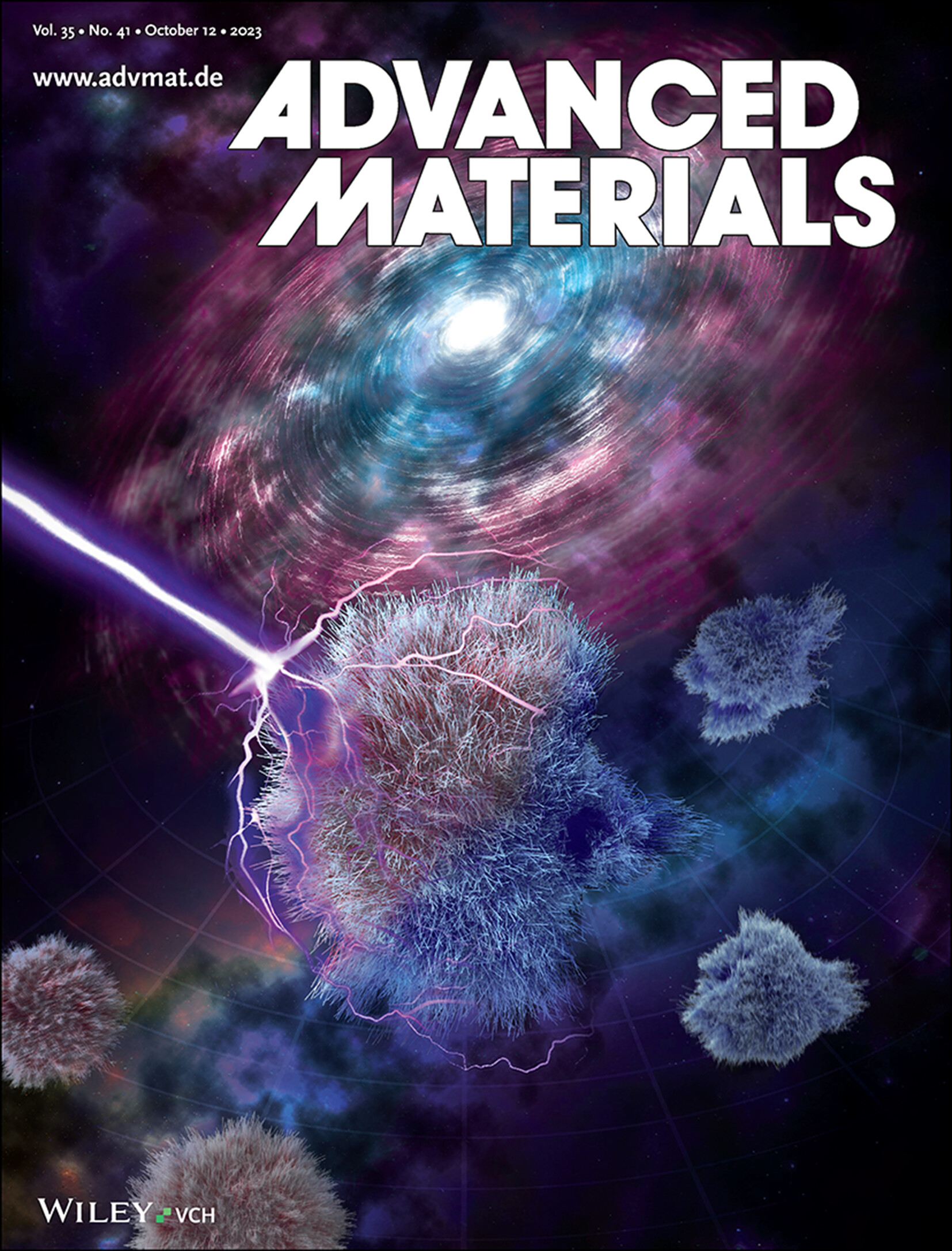Siyang He is an experienced PhD student in Robert Göstl's research group at the DWI and has an eye for art while his heart beats for science. During his work, he is very delighted that there are enough opportunities to combine these two categories. For instance, he creates covers for his publications, just as he did for his latest paper, about which you can find a summary in the following text.

Photoinduced Mechanical Cloaking of Diarylethene-Crosslinked Microgels
The growing emphasis on sustainable solutions within polymer science inevitably leads to an increased focus on exploring strategies to regulate the degradation of polymers. These strategies provide an essential foundation into a more environmentally friendly future for polymers. In this pursuit, Siyang He, Walter Richtering, and Robert Göstl and have introduced an innovative method that harnesses the power of light to control the mechanochemical degradation of microgels, serving as a proof-of-concept material platform. This technique, rooted in the sequential linkage of multiple stimuli-responses within polymer architectures, presents a valuable approach for orchestrating logically conjunctive gating of functional material processes on demand.
In this context, the introduction of a light-responsive molecular group, also known as photoswitches, into certain microgels enables a light-induced shift of the volume-phase transition temperature (VPTT), meaning a shift of the temperature value at which a strong and abrupt change in the microgel swelling degree occurs. Notably, microgels exhibit distinctive behaviors based on their state relative to the VPTT: when below this temperature, swollen microgels are susceptible to mechanical force, leading to breakage-aggregation processes, while above the VPTT, collapsed microgels remain structurally intact under the influence of ultrasonication-induced force.
Within this temperature range, the photoswitch facilitates the transition of microgels from a swollen to a collapsed state, effectively controlling their response to external forces. This is exemplified by the light-gated activation of an embedded fluorogenic mechanophore. Remarkably, this novel photoinduced mechanical cloaking system operates at the polymer topology level, rendering it a potentially universal and versatile technique for the precise and on-demand control of polymer degradation.
